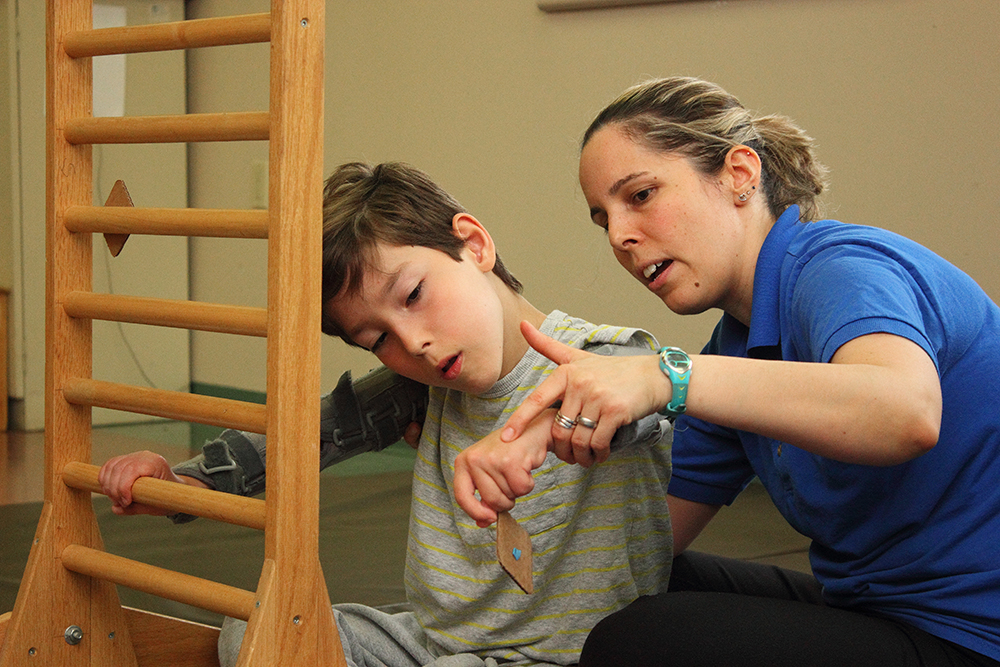65 Years Later, An Entrepreneurial Spirit Marches On
By Cheryl Long
 Sixty-five years ago, Canadian women known as the Marching Mothers went door to door collecting “just a dime” in an effort to raise money to find a vaccine to prevent polio. In 1955, Dr. Jonas Salk developed the polio vaccine and as threat of the disease diminished, the Ontario March of Dimes refocused its efforts on funding assistive devices for those afflicted with the polio virus, along with rehabilitation and job training for polio survivors.
Sixty-five years ago, Canadian women known as the Marching Mothers went door to door collecting “just a dime” in an effort to raise money to find a vaccine to prevent polio. In 1955, Dr. Jonas Salk developed the polio vaccine and as threat of the disease diminished, the Ontario March of Dimes refocused its efforts on funding assistive devices for those afflicted with the polio virus, along with rehabilitation and job training for polio survivors.
Over the decades that followed, March of Dimes Canada has expanded its services to individuals with a wide range of disabilities. As its mandate grew, the organization has increasingly addressed the needs of people with more profound levels of disability, including those with complex care needs and those who are medically fragile.Today, it’s hard to imagine someone contracting polio, much less asking for “just a dime” to fund research efforts. But fueled by a similar passion that saw the Marching Mothers knock on doors throughout their communities, March of Dimes Canada continues to work on behalf of people with physical disabilities, no matter how that disability came about.
Andria Spindel is the non-profit organization’s president and chief executive officer, and has been part of its evolution since joining as executive director in 1981. The challenge of switching from a job with 18 employees and a $1-million budget to a staff of 180 and a $5-million budget was just part of the attraction. Spindel was also personally aware of the challenges faced by someone with a disability. Her mother had been disabled since Spindel was five, which gave her personal insight into the issues faced by anyone with a disability.
Started originally in Ontario, the organization launched its first out-of-province program in Vancouver, focusing on stroke recovery services. They became national in scope in 2006 and created March of Dimes Canada as an entity separate from Ontario March of Dimes. “We’ve not only continued to do what was being done then, but we’ve created many more services. We’re very diverse in our offerings and we have partnerships now that are unique and different to both the private sector and the non-profit sector,” Spindel said. In 2013, the two organizations merged into one as March of Dimes Canada.
Help for anyone with a physical disability
What makes March of Dimes Canada unique is its dedication to helping anyone with a physical disability, no matter its origin. While some charitable organizations limit their reach to those affected by a particular disease or condition, March of Dimes Canada isn’t concerned about the cause. Some clients have been in accidents, others are born with a disability or even the simple act of aging can lead to new limitations. Their vision is inclusivity with a mission to “maximize the independence, personal empowerment and community participation of people with physical disabilities”.
“We provide functional services more than disease-specific. If you have multiple sclerosis or muscular dystrophy or ALS, you might well be getting services from March of Dimes Canada…” Spindel explained. “With supportive housing all over Ontario, your eligibility has nothing to do with the cause of your disability; it has more to do with your home situation, your finances and the care level that you need.”
To say that the range of services and programs provided by March of Dimes Canada is extensive is an understatement. From helping businesses comply with accessibility legislation to conducting medical clinics in remote northern communities to helping people with disabilities find meaningful employment, the organization stretches far and wide to make it easier for their clients to break down barriers. One program eases the transition from military to civilian life for members of the Canadian Armed Forces; another sets up support groups for people recovering from a stroke. Funding from the Government of Nunavut will allow March of Dimes to bring clients with an acquired brain injury to Ottawa and Edmonton to join their residential support programs.
Of course, providing a vast range of programs to people across the country requires a considerable amount of funding and, like most charitable organizations realize today, competition for donations is fierce. March of Dimes still has some volunteers going door to door and direct mail campaigns continue to be effective, but the charity has come up with new, creative ways to increase support for their efforts. Volunteer-run fundraising events, like the Battle of the Bands-style Rock for Dimes, the annual Walk ‘n’ Roll and this year’s “All Things Hot & Spicy” cocktail party, engage the community while raising money for much-needed services. Its signature event is the Ability and Beyond Gala Dinner, which has featured notable keynote speakers such as Amy Grant, Captain Mark Kelly and Aaron Ralston.
Special events draw younger donors
Special events, such as volleyball and dodge ball tournaments, also help to attract younger donors. The hope is to build a relationship with the younger generation, and encourage them to become increasingly engaged with March of Dimes. Events are proving to be a more successful tool than solicitation through social media, Spindel said.
“Fundraising through social media is most effective when there’s a crisis or a tragedy. We raise very little through the web and social media,” Spindel said. “While puppies and babies seem to attract the most attention and funding, we should also have universal appeal as everyone knows or has a family member with a disability.”
But they have gained traction, particularly through Twitter, by affiliating with celebrities. Canadian wrestler Bret “Hitman” Hart suffered a stroke in 2002; since recovered, he has served as the spokesperson for the March of Dimes Stroke Recovery Canada program. The annual Toronto OpportuniTea High Tea at the Fairmont Royal York Hotel lets fans of The Young and the Restless meet Kate Linder and other actors from the popular soap opera. Many famous Canadians, from actors William Shatner and Leslie Nielsen to former Maple Leaf Darryl Sittler have lent their support to the March of Dimes. In most cases, celebrities are just pleased to be asked to participate, Spindel said.
The future of charitable organizations like March of Dimes Canada is looking beyond traditional routes. Spindel has her eye on business development — expanding three separate lines of business — to help the charity carry on the important work that it does for people with disabilities across Canada. That may mean providing business services to other charities, developing and delivering training programs, or working in partnership with Toronto-based Quadrangle Architects to help businesses comply with accessibility standards. March of Dimes has also becoming increasingly involved in efforts for people with disabilities at the international level.
“We’re also very entrepreneurial, which I think is a good thing for charities,” Spindel said. “Entrepreneurial in a sense that we test and try new programs and services. We’re not averse to a certain level of risk to see if what we’re trying to offer is worthwhile to people and helps them meet a goal in terms of living independently in the community.”
www.marchofdimes.ca






